Happy New Year and Welcome Back!
YCS teachers, here are 4 guiding questions to explore deeper as you venture in exploring and implementing formative assessments for the next five months.
-
What do we want all students to know and be able to do?
-
How will we know if they learned it?
-
How will we respond when students do not learn?
-
How will we extend the learning for students who are already proficient?
In a Nutshell - How do we know students "get it"? As a District, we must be ready to pivot and redirect our efforts to emphasize the use of Formative Assessment - focusing on Checking for Understanding.
Starting in January through June 2021, we will focus on Checking for Understanding by eliciting evidence of student understanding. The purpose of gathering student evidence within the formative assessment process is that it allows:
-
A teacher to know where students are in relation to the learning target,
-
Students see what they know and need to work on, and
-
The teacher and students use the information to make decisions about where to go next with the learning
Gathering Evidence of Student Understanding Related to the Formative Assessment Process allows:
-
The teacher uses a variety of integrated strategies and tools (observations, student conferences, questioning strategies, or written work) tightly aligned to the learning targets to elicit evidence of thinking or understanding from all students. The teacher appears to analyze students’ thinking and other evidence and clearly indicates how the information will be used to inform feedback and instructional next-steps.
-
When used regularly, the use of formative assessments (such as checking for understanding) enables every teacher to determine what students know, what they need to know, and what type of instructional interventions are effective.
-
Checking for Understanding also helps the teacher to refocus their teaching and enables all students to get the most out of their classroom experience.
Why use Formative Assessments - Checking for Understanding strategies?
It...
-
Fosters Good Teaching
-
Fosters Metacognition
-
Encourages Looking for Multiple Representations of Knowledge
-
Deepens Assessment
-
Is Aligned with Best Practices
-
Help in Checking Your Own Understanding
Here are examples of creative ways that you can Check for Understanding. These practical strategies are designed to help you check student understanding of the content being taught. Know that checking for understanding does not need to be complicated. As you can see by the strategies shared below...we need to be intentional in simplifying the way that we check for understanding.
-
Brookhart Tools for Formative Assessment Technique for Checking for Understanding
-
Formative Assessment Techniques for Checking for Understanding
Beverly Whatley and Paula Sizemore will be rolling out a 6 Module PD on how to lead using Formative Assessments in the near future. Please reach out to me if you have any questions.









